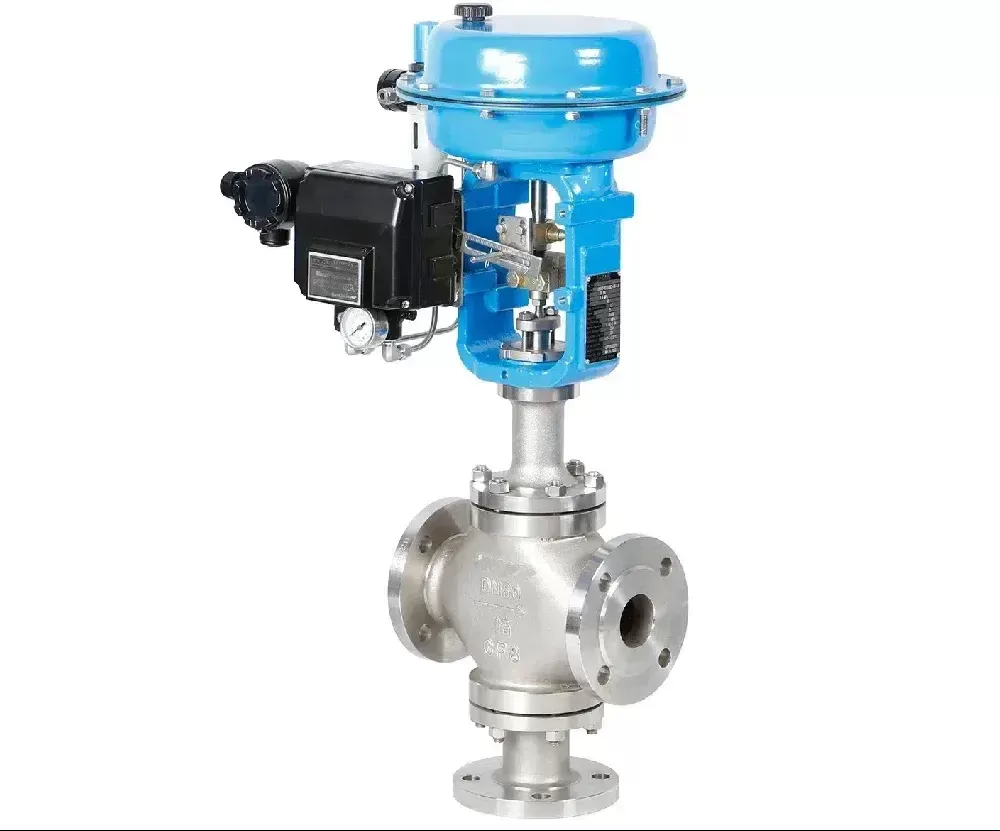Notifications

8 minutes, 1 second
-98 Views 0 Comments 0 Likes 0 Reviews

Understanding 3-Way Control Valves: A Comprehensive Guide for Industrial Applications
Introduction
As a leading control valve manufacturer in China, we deliver high-quality valves and control actuators expertly designed to meet a wide range of industrial requirements.
In industrial automation and process engineering, control valves are essential components for managing fluid flow. Among them, three-way control valves stand out for their versatility and functionality, playing a critical role in systems that require fluid mixing, diversion, or temperature regulation. From HVAC systems to chemical processing plants, these valves help streamline operations, improve efficiency, and maintain optimal performance.
This guide explores the fundamentals of 3-way control valves—including how they work, their types, advantages, and key selection criteria—offering valuable insights for engineers, designers, and plant operators.
A three-way control valve features three ports and is designed to either:
Mix two fluid streams into one outlet (Mixing Mode), or
Divert a single fluid stream into two separate outlets (Diverting Mode).
By combining both functions in a single unit, these valves simplify system design, reduce the need for multiple components, and enhance operational reliability. Often shaped like a “T”, these valves are commonly referred to as T-port valves due to their port arrangement that enables dynamic fluid redirection.
Key Industries Using 3-Way Valves:
HVAC (heating/cooling water control)
Chemical processing (temperature blending)
Power generation (steam and thermal control)
Food and beverage (fluid diversion in CIP systems)
Water treatment and oil & gas (flow switching and regulation)
The two primary configurations of three-way valves—balanced and unbalanced—are selected based on application requirements.
Designed for both mixing and diverting, these valves incorporate features that counteract pressure imbalances, ensuring stable control even in demanding conditions.
Features:
Continuous modulation for precise regulation
Reduced wear due to pressure-balancing components
Longer service life and enhanced control accuracy
Applications:
HVAC systems for hot/chilled water regulation
Steam or thermal oil systems
Temperature control in chemical reactors
Primarily used for mixing, unbalanced valves are simpler in construction and suited to less demanding systems where precise modulation isn’t required.
Features:
Cost-effective solution for basic mixing/diverting tasks
Simpler design, easier to maintain
Suitable for on/off applications
Applications:
Batch mixing processes
Hot/cold water blending
Low-pressure service lines
At the core of a 3-way valve is a movable plug, ball, or disk that redirects flow among three ports. Valve operation can be manual or automated via pneumatic or electric actuators.
Modes of Operation:
Mixing Mode: Combines two inlet flows into one outlet
Diverting Mode: Splits a single inlet flow into two outlets
Configurations:
L-Port: Simple flow switching between two outlets
T-Port: Allows for simultaneous mixing or partial diversion
Advanced automation and integration with control systems enable responsive and precise flow management in real-time.
Three-way valves provide distinct advantages over dual-valve setups:
Simplified Piping Layout: Reduces the number of valves and fittings
Compact Footprint: Ideal for space-constrained installations
Lower Maintenance Needs: Fewer components mean fewer failure points
Enhanced Modulation Accuracy: Especially in balanced valve systems
Reduced Cost: One valve performs the task of two, saving on hardware and labor
These benefits make them an excellent choice for modern industrial applications prioritizing efficiency and performance.
To ensure optimal performance and durability, consider the following selection criteria:
Chemical Compatibility: Choose materials like stainless steel or bronze for corrosive media
Viscosity: Thicker fluids may require larger or specially designed ports
Clean vs. Dirty Service: For media with particulates, consider self-cleaning or flushable designs
Ensure the valve meets or exceeds system pressure and temperature demands.
Use balanced valves for high-pressure or high-temperature applications
Always verify ANSI/DIN class ratings for safety compliance
Proper sizing avoids issues like flow restriction or control instability.
Calculate Cv (flow coefficient) based on system conditions
Use manufacturer charts or software for accurate sizing
Choose a valve with the appropriate end connections and dimensions for your pipeline:
Flanged, threaded, or welded ends
Valve sizes commonly range from ½” to 12” (15mm to 300mm)
Select the appropriate actuation method:
Manual: For simple, low-traffic systems
Pneumatic: Fast response in industrial automation
Electric: Precision control with PLC integration
Ensure compatibility with control signals (e.g., 4–20mA, 0–10V) and specify fail-safe positions (fail-open/closed).
Consider shutoff capabilities, pressure relief features, and system integration
Look for certifications: API, ASME, ISO, CE, etc.
Include accessories like positioners and limit switches for critical processes
3-way control valves are used in a variety of industrial and commercial systems:
HVAC: Maintain comfort by regulating heating and cooling flows
Chemical Plants: Blend reactants and control process temperatures
Power Generation: Steam conditioning and turbine bypass systems
Pharmaceuticals: Sanitary mixing and dosing in sterile environments
Food & Beverage: Diverting flows for CIP and production lines
Their modular designs and material flexibility make them suitable across sectors.
Three-way control valves are essential components in modern fluid control systems, valued for their ability to regulate, divert, and mix flows efficiently. Whether you're designing a complex chemical process or upgrading an HVAC system, these valves offer unmatched versatility, space savings, and cost-effectiveness.
By understanding the different valve types and carefully evaluating system requirements—fluid characteristics, pressure/temperature ranges, actuation needs, and compliance standards—you can select the ideal 3-way valve for your application.
As industries increasingly focus on automation and energy efficiency, the role of three-way control valves will only continue to grow, supporting smarter and more sustainable process management.Know more about Google SEO Directory

